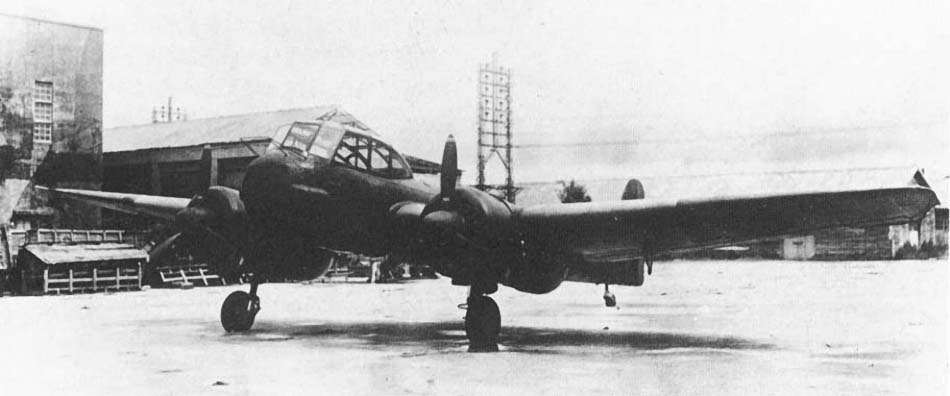- Yes
- No

Kyushu Q1W1 Model 11 (陸上哨戒機 東海)
The Kyushu Q1W1 Model 11 was created in 1943 as an anti-submarine aircraft. The aircraft was already obsolete when it was put into service, which, together with the deteriorating war situation, led to the fact that from January 1945 (the beginning of operational activities) until the end of the war, only 68 of the 153 aircraft produced survived.
History
Before World War II, the Imperial Japanese Navy Command did not pay much attention to creating a special aircraft for anti-submarine warfare. Either obsolete planes or seaplanes were to serve this role. This solution had more cons than pros, which later took revenge on the Japanese. When the Pacific War broke out in 1941, American submarines quickly began attacking Japanese ships even near the home islands. Therefore, in September 1942, a specification for a new anti-submarine aircraft was drawn up. The requirements were as follows:
- Ability to fly at low speed for a long time (130 km/h for 10 hours)
- It had to have a minimum load of 500 kg (two bombs weighing 250 kg)
- The aircraft was to be capable of attacking from a shallow dive flight
Watanabe Iron Works (later Kyushu Aircraft) set out to meet these requirements. Work on the machine was entrusted to engineer Nojiri Kozo, who designed the Q1W as a small aircraft powered by two engines. The crew was to consist of 3 people (pilot, listening equipment operator and navigator/gunner) who were to be in a glass cockpit, and the submarine detection equipment was to be located in the hull behind the cockpit. The plane closely resembled the Ju-88, only it was smaller. The process of creating the design and then the prototype was going very well and in December 1943 the first prototype was ready for flight. During testing, there were problems with the sway of the plane, so engineer Kozo had to redesign it. After this modification, 8 more pre-serial aircraft were ordered, then the aircraft was accepted into service in 1944 as the Kyushu Q1W1. Serial production started in April 1944 and continued until the end of the war. The Kyushu Q1W1 aircraft began operational operations in January 1945, when it turned out that they were unable to perform the operations for which they were designed. At this point, they were an easy target for American fighters, and due to problems with submarine detection systems. According to reports, the Americans lost only one submarine, SS-237 “Trigger”, with its help.The aircraft suffered high losses during its short service (85 aircraft). After the war, some Q1W1 planes went to the USA for testing, and in 1946 all of them went to scrap.
Construction description
The Kyūshū Q1W1 was a twin-engine low-wing aircraft with a metal structure. The plane had a classic landing gear, retracted from a flight with a tail wheel. The propulsion was 9-cylinder, air-cooled radial engines of the Hitachi GK2C Amakaze 31 type with a take-off power of 610 hp and a power of 480 hp at an altitude of 1500 meters with three-plane metal propellers with variable pitch.
General characteristics
- Crew: 3
- Length: 12.09 m (39 ft 8 in)
- Wingspan: 16 m (52 ft 6 in)
- Height: 4.12 m (13 ft 6 in)
- Wing area: 38.2 m2 (411 sq ft)
- Empty weight: 3,102 kg (6,839 lb)
- Gross weight: 4,800 kg (10,582 lb)
- Max takeoff weight: 5,318 kg (11,724 lb)
- Powerplant: 2 × Hitachi GK2 Amakaze 31 9-cylinder air-cooled radial piston engines, 455 kW (610 hp) each
- Propellers: 3-bladed variable-pitch propellers
Performance
- Maximum speed: 322 km/h (200 mph, 174 kn)
- Range: 1,342 km (834 mi, 725 nmi)
- Service ceiling: 4,490 m (14,730 ft)
- Rate of climb: 3.8 m/s (750 ft/min)
- Wing loading: 126 kg/m2 (26 lb/sq ft)
Armament
- 1 × flexible rearward-firing 7.7 mm Type 92 machine gun
- 1 × fixed forward-firing 20 mm Type 99 cannon (sometimes fitted)
- 2 × 250 kg (550 lb) bombs or depth charges
Mounting 20 mm cannons

Avionics
- Type 3 Model 1 MAD (KMX)
- Type 3 Ku-6 Model 4 Radar
- ESM Antenna equipment
Summary
The Kyushu Q1W1 would be a very interesting aircraft for Japan in War Thunder. It is a Japanese Ju 88, only different, because it has anti-submarine equipment (not needed in the game for now) and can carry offensive armament in the form of 20 mm cannons. It would make a great premium aircraft or as an event. I encourage you to discuss in the comments and to share your own knowledge on this subject.
Finally, I apologize for the linguistic and logical errors because unfortunately English is not my main language and I had to use google translator.
Internet sources
東海 (航空機) - Wikipedia
Kyushu Q1W - Wikipedia
Уголок неба ¦ Kyushu Q1W Tokai (airwar.ru)
Kjúšú Q1W1 11 Tókai [Lorna] : Kjúšú / Watanabe (valka.cz)
Kyushu Q1W Tokai (Eastern Sea) ‘Lorna’ (historyofwar.org)
Kyushu Q1W Tokaï ‘Lorna’ — avionslegendaires.net
Kyushu Q1W - Patrol anti-submarine aircraft (airpages.ru)
Kyushu Q1W Tokai (Eastern Sea) (combinedfleet.com)
Kyushu Q1W1 Tokai (Lorna) Info (daveswarbirds.com)
Kyushu Q1W Tokai (Morze Wschodnie) / (Lorna) Bombowiec do zwalczania okrętów podwodnych (militaryfactory.com)
Kyushu Q1W Tokai / LORNA - anti-submarine (aviastar.org)
対潜哨戒機 東海 (www.ne.jp)
Kyushu Q1W - Passed for Consideration - War Thunder - Official Forum
Book sources
- JAS Japanese Anti-Submarine Aircraft In The Pacific War page 98-124

























